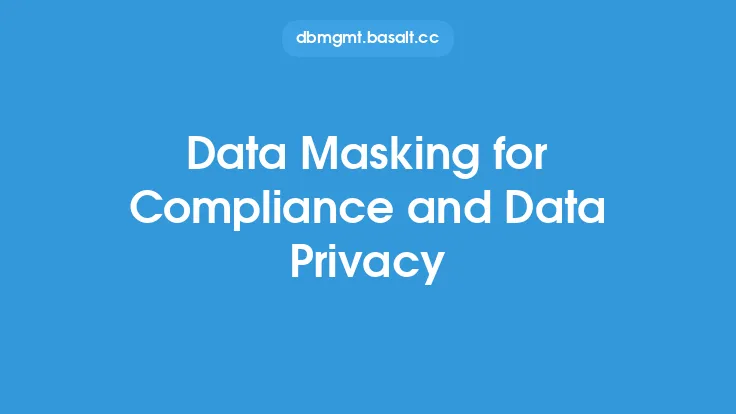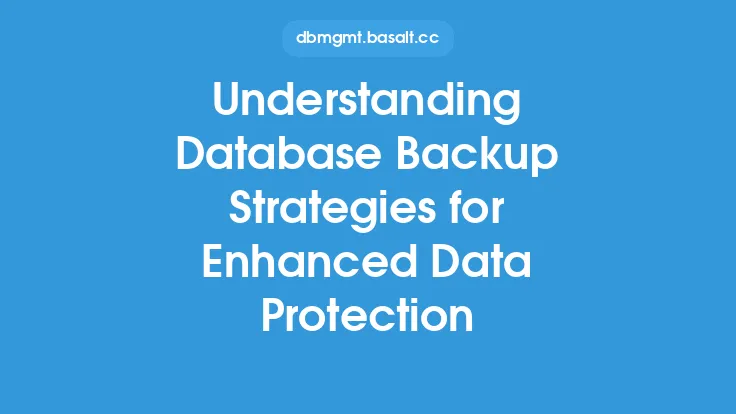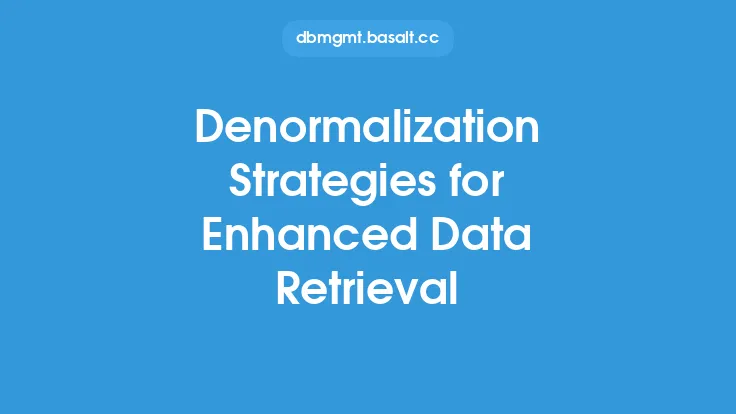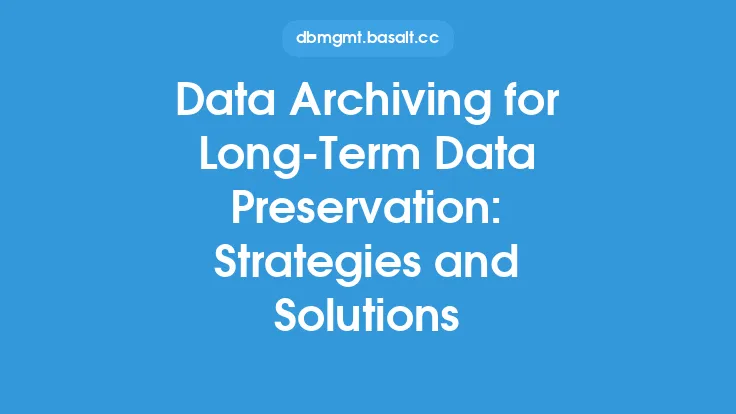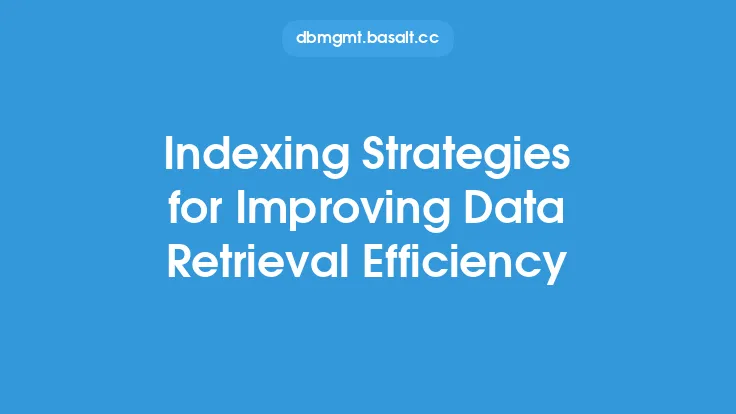Data masking is a crucial aspect of database security that involves hiding sensitive information from unauthorized access. Different data types require unique masking strategies to ensure the protection of sensitive information. In this article, we will delve into the various data masking strategies for different data types, providing a comprehensive overview of the techniques and methods used to protect sensitive data.
Introduction to Data Types and Masking Strategies
Data types can be broadly classified into several categories, including numeric, character, date, and binary data. Each data type requires a specific masking strategy to ensure the protection of sensitive information. For example, numeric data such as credit card numbers and social security numbers require masking strategies that preserve the format and structure of the data while hiding the sensitive information. Character data such as names and addresses require masking strategies that protect the identity of individuals while preserving the format and structure of the data.
Masking Strategies for Numeric Data
Numeric data such as credit card numbers, social security numbers, and phone numbers require masking strategies that preserve the format and structure of the data while hiding the sensitive information. One common masking strategy for numeric data is to replace the first few digits with asterisks or zeros, while preserving the last few digits. For example, a credit card number can be masked as XXXX-XXXX-XXXX-1234, where the first 12 digits are replaced with asterisks and the last 4 digits are preserved. Another masking strategy for numeric data is to use a hash function to replace the sensitive information with a hashed value. For example, a social security number can be hashed using a one-way hash function such as SHA-256, resulting in a fixed-length string of characters that cannot be reversed.
Masking Strategies for Character Data
Character data such as names, addresses, and email addresses require masking strategies that protect the identity of individuals while preserving the format and structure of the data. One common masking strategy for character data is to replace the first few characters with asterisks or zeros, while preserving the last few characters. For example, a name can be masked as XXXX Johnson, where the first 4 characters are replaced with asterisks and the last name is preserved. Another masking strategy for character data is to use a substitution algorithm to replace the sensitive information with a substitute value. For example, an email address can be substituted with a generic email address such as [email protected], where the sensitive information is replaced with a generic value.
Masking Strategies for Date and Time Data
Date and time data such as birthdates and timestamps require masking strategies that preserve the format and structure of the data while hiding the sensitive information. One common masking strategy for date and time data is to shift the date or time by a fixed interval, such as adding or subtracting a fixed number of days or years. For example, a birthdate can be shifted by 5 years, resulting in a masked birthdate that is 5 years older or younger than the original birthdate. Another masking strategy for date and time data is to use a hash function to replace the sensitive information with a hashed value. For example, a timestamp can be hashed using a one-way hash function such as SHA-256, resulting in a fixed-length string of characters that cannot be reversed.
Masking Strategies for Binary Data
Binary data such as images and audio files require masking strategies that preserve the format and structure of the data while hiding the sensitive information. One common masking strategy for binary data is to use a encryption algorithm to encrypt the sensitive information, resulting in a encrypted binary file that can only be decrypted with the corresponding decryption key. Another masking strategy for binary data is to use a watermarking algorithm to embed a watermark into the binary file, resulting in a watermarked binary file that can be detected and traced.
Masking Strategies for Sensitive Data in Specific Industries
Different industries have unique data masking requirements due to regulatory and compliance requirements. For example, the healthcare industry requires masking strategies that protect patient identifiable information (PII) such as names, addresses, and medical records. The financial industry requires masking strategies that protect financial information such as credit card numbers, social security numbers, and bank account numbers. The government industry requires masking strategies that protect sensitive information such as classified documents and personnel records.
Technical Implementation of Data Masking Strategies
The technical implementation of data masking strategies involves using a combination of programming languages, software tools, and algorithms to mask sensitive information. For example, a data masking tool can be used to mask sensitive information in a database, while a programming language such as Python or Java can be used to implement custom masking algorithms. A software tool such as a data masking appliance can be used to mask sensitive information in real-time, while a cloud-based service can be used to mask sensitive information in the cloud.
Challenges and Limitations of Data Masking Strategies
Data masking strategies have several challenges and limitations, including the need to balance data protection with data usability, the need to ensure data consistency and integrity, and the need to comply with regulatory and compliance requirements. Additionally, data masking strategies can be complex and time-consuming to implement, requiring significant resources and expertise. Furthermore, data masking strategies can be vulnerable to attacks and exploits, requiring ongoing monitoring and maintenance to ensure the protection of sensitive information.
Conclusion
In conclusion, data masking strategies for different data types are crucial for protecting sensitive information from unauthorized access. Different data types require unique masking strategies, including numeric, character, date, and binary data. Masking strategies can be implemented using a combination of programming languages, software tools, and algorithms, and must balance data protection with data usability, ensure data consistency and integrity, and comply with regulatory and compliance requirements. By understanding the different data masking strategies and their technical implementation, organizations can protect sensitive information and ensure the security and integrity of their data.
